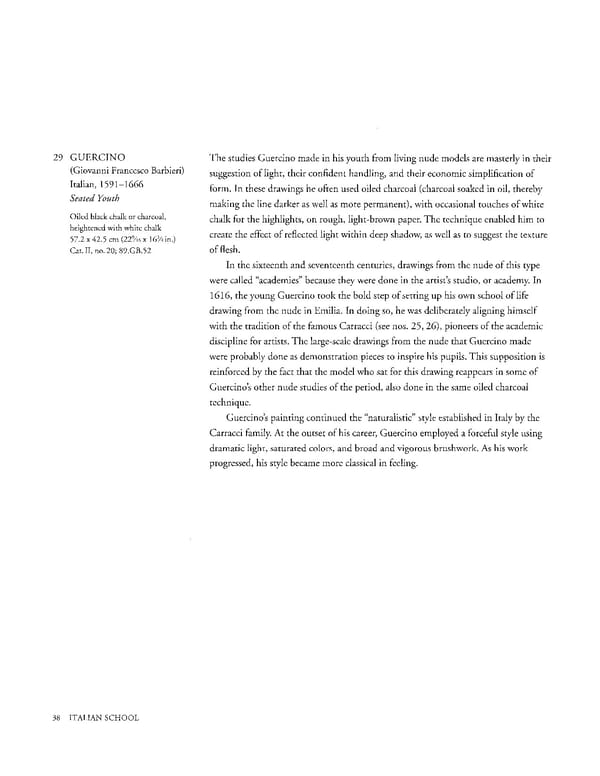29 GUERCINO The studies Guercino made in his youth from living nude models are masterly in their (Giovanni Francesco Barbieri) suggestion of light, their confident handling, and their economic simplification of Italian, 1591-1666 form. In these drawings he often used oiled charcoal (charcoal soaked in oil, thereby Seated Youth making the line darker as well as more permanent), with occasional touches of white Oiled black chalk or charcoal, chalk for the highlights, on rough, light-brown paper. The technique enabled him to heightened with white chalk create the effect of reflected light within deep shadow, as well as to suggest the texture 57.2 x 42.5 cm (22 9/16 x 16¾ in.) Cat. II, no. 20; 89.GB.52 of flesh. In the sixteenth and seventeenth centuries, drawings from the nude of this type were called "academies" because they were done in the artist's studio, or academy. In 1616, the young Guercino took the bold step of setting up his own school of life drawing from the nude in Emilia. In doing so, he was deliberately aligning himself with the tradition of the famous Carracci (see nos. 25, 26), pioneers of the academic discipline for artists. The large-scale drawings from the nude that Guercino made were probably done as demonstration pieces to inspire his pupils. This supposition is reinforced by the fact that the model who sat for this drawing reappears in some of Guercino's other nude studies of the period, also done in the same oiled charcoal technique. Guercino's painting continued the "naturalistic" style established in Italy by the Carracci family. At the outset of his career, Guercino employed a forceful style using dramatic light, saturated colors, and broad and vigorous brushwork. As his work progressed, his style became more classical in feeling. 38 ITALIAN SCHOOL
 Masterpieces of the Getty Museum: Drawings Page 38 Page 40
Masterpieces of the Getty Museum: Drawings Page 38 Page 40